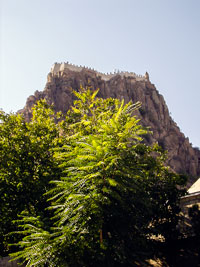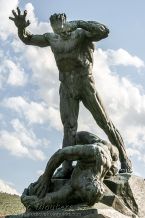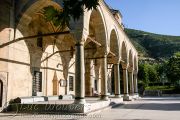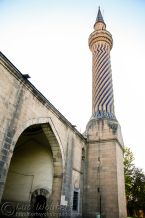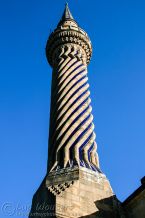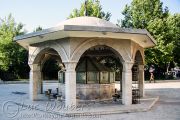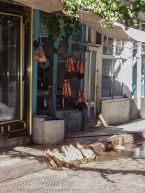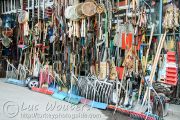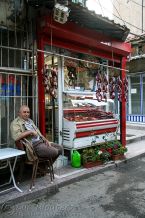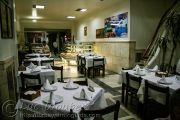Afyon's official name, as decreed by the Turkish parliament in 2004, is Afyonkarahisar meaning Opium Black Fortress. The production of opium for pharmaceutical purposes is still the most important activity for the agricultural sector of the region. Afyon produces more than a third of the world's legally-grown pharmaceutical opium. But for the Turks, Afyon is famous for the production of kaymak (clotted cream). Kaymak is the rich cream produced by cattle that are fed the left-over opium plants.
History of Afyon
The Hittites already had a settlement here which they called Hapanuwa. They were succeeded by Phrygians, Lydians, and Persians. The city was taken by Alexander the Great and finally ended up being part of Rome and Byzantium as Nikopolis. In 1071, the Seljuk Turks took the city and renamed it as Kara Hisar ("black castle") after the citadel that dominates the city from a 201 meters high volcanic rock. After the collapse of the Seljuk Empire, it became part of the beylik of Germiyan with its capital at Kütahya. The Ottomans first captured the city in 1392 but lost it soon after to Timur Lenk. The last sultan of Germiyans, Yakup II, bequeathed his beylik, including Afyon to the Ottomans in 1427. Under the Ottomans, the city thrived as a centre of opium production and was named Afyon, meaning opium.
Afyon played an important role in the Turkish War of Independence. In August 1922, the Turks decisively destroyed the Greek expeditionary army in the so-called Battle of the Commander-in-Chief (guess who?), at nearby (40 km to the west) Dumlupınar.
Sights & Photos of Afyon
The skyline of Afyon is dominated by the black, craggy rock topped with the large citadel (kale or hisar). Seven hundred steps lead to the 226 m high summit. The first stronghold here is thought to have been built by the Hittite king Mursilis II around 1350 BCE. Contemporary restoration made the original kara hisar disappear.
The Imaret Camii was built for Gedik Ahmet Pasha in 1472. The design of the mosque demonstrates the transition from Seljuk to Ottoman architecture, with its fluted minaret dashed with zigzagging blue İznik tiles so typical for the Seljuk style.
https://www.turkeyphotoguide.com/afyon?tmpl=component&print=1#sigProIde5bd7e80af
Travel Information & Travel Tips
I visited Afyon in 1992, 2003, and 2008. In 2003 and 2008, I was very lucky to stay in the Çakmak Marble Hotel, without a doubt, Afyon's best hotel. The hotel asked a reasonable price of about 30 Euro (about 35 US dollar) for a single room, breakfast included. For this price, I got a nice room with air-conditioning and satellite TV, buffet-style breakfast and, last but not least, access to the thermal swimming pool in the basement.
As for dinner, İkbal Lokantası (Burmalı Mah. Millet Cad. No:19/A) serves an excellent meal (no alcohol).
Afyon was our base for exploring the Phrygian Valley.
